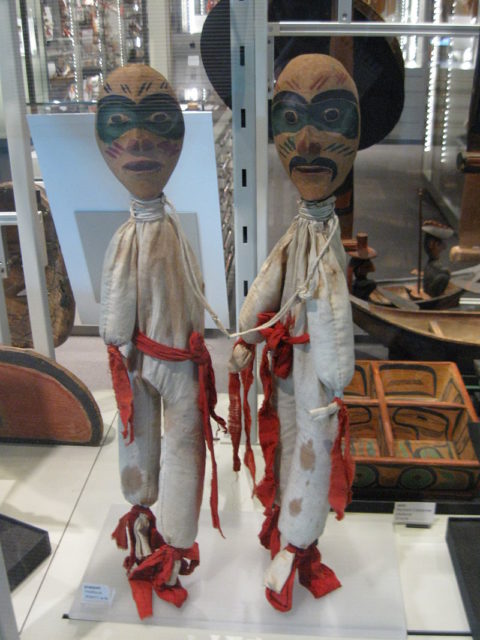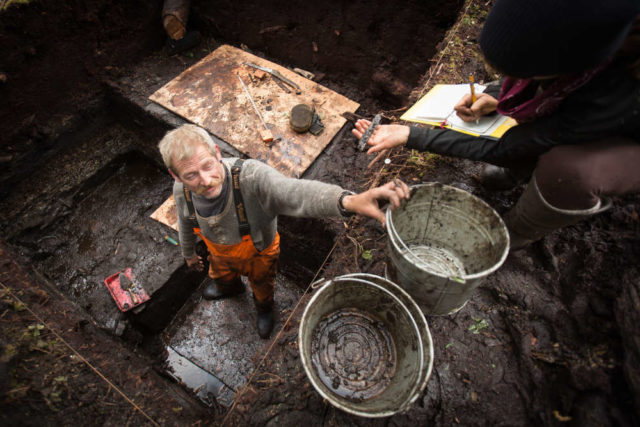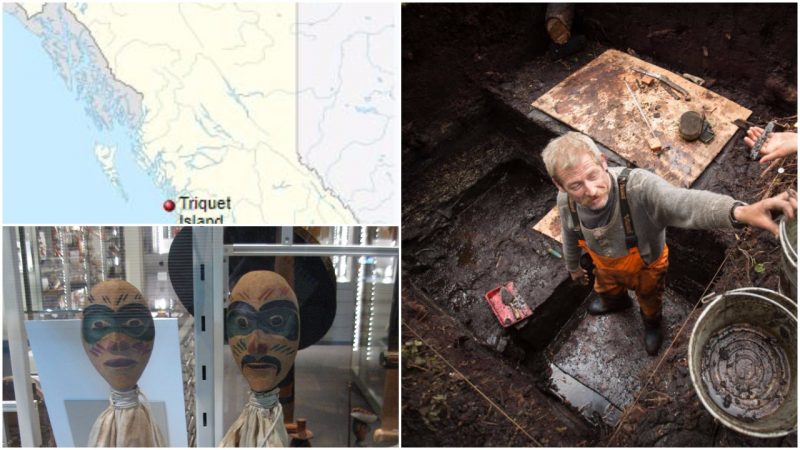Researchers are finding more and more evidence of ancient life in British Columbia in Canada.
Teams of archaeologists and students from the Hakai Institute, University of Victoria in British Columbia, and the local First Nations have found the remains of a settlement that pre-dates the Egyptian pyramids in Giza. According to Alisha Gauvreau, a student at the University of Victoria, the site on Triquet Island, about 300 miles from Victoria in western British Columbia, has produced relics that have been carbon-dated to 14,000 years ago, about 9,000 years older than the pyramids.
The settlement, now considered the oldest ever found in North America, contained tools, fish hooks, spears, and a cooking hearth still holding bits of charcoal that these ancient people presumably burned. The pieces of charcoal were an important find as they were easy to carbon-date.
What led them to this particular site? The university students had listened to an old story relating to the Heiltsuk band of people who were indigenous to the area. According to the story, there was a small piece of land that never froze, even during the last Ice Age. This ignited curiosity among the students, and they set out to find the spot.

A spokesman for the indigenous Heiltsuk First Nation, William Housty, says it “is just amazing” that the stories that were passed down from generation to generation turned out to lead to a scientific discovery. “This find is very important because it reaffirms a lot of the history that our people have been talking about for thousands of years,” he says. The stories described Triquet Island as a sanctuary of constancy due to the fact that the sea level in the area remained stable for 15,000 years. The tribe has been in many clashes regarding land rights and Housty feels that they will be in a strong position in future situations with not only oral stories but also the scientific and geological evidence to back them up.

CC BY-SA 3.0
The discovery may also lead researchers to change their beliefs about the migration routes of the early people in North America. It is generally believed that when humans crossed an ancient bridge of land that once connected Asia and Alaska, they migrated south on foot. But the new findings indicate that people used boats to traverse the coastal area, and the dry-land migrations came much later. According to Gauvreau, “What this is doing is changing our idea of the way in which North America was first peopled.”
Previously, the earliest signs of the Heiltsuk tribe in British Columbia were in 7190 BC, about 9,000 years ago—a full 5,000 years after the artifacts found on Triquet Island were dated. In the 18th century, there were over 50 Heiltsuk villages on the islands in the area of Bella Bella.
They lived off the bounty of the sea and established trading with other islands. When Europeans established the Hudson’s Bay Company and Fort McLoughlin, the Heiltsuk people refused to be squeezed out and carried on trade with them. Now the tribe owns the land that the Hudson’s Bay Company claimed when its settlers arrived.

The Heiltsuk Cultural Education Centre found in the Bella Bella Community School contains exhibits of transcribed stories, maps of old settlements, and historical photos of the tribe.
The goals of the Center are to protect the interests of the Heiltsuk band by keeping a permanent record of the band’s language and traditions so as to be able to pass the knowledge on to new generations, and to create programs to form awareness of the band’s history and traditions for any new cultural developments and treaty negotiations for self-government that are still going on today by the BC Treaty Commission.
